yellow journalism
description: a type of journalism that presents little or no well-researched news and instead uses sensationalism to attract readers
64 results
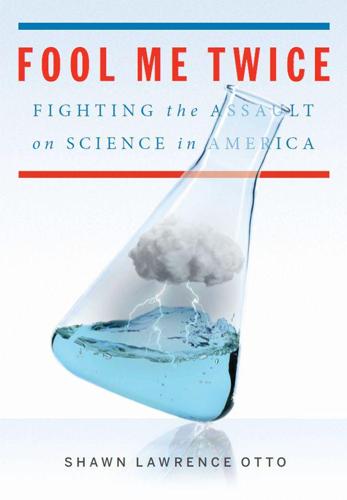
Fool Me Twice: Fighting the Assault on Science in America
by
Shawn Lawrence Otto
Published 10 Oct 2011
It required those who held licenses to broadcast over the public airwaves to present programs on controversial issues of public importance and to present them in a way that was (in the FCC’s view) honest, equitable, and balanced. After the policy was abolished, Congress recognized that there was danger here and tried to codify the doctrine into law, but President Reagan vetoed the legislation. As a result, broadcasters were unburdened from the requirement to present balanced news coverage, and the age of yellow journalism was reborn. Chief among the early gainers were angry and opinionated baby-boomer talk jocks like Rush Limbaugh, who began engaging in political rants that charged up listeners’ amygdalae with outrage in a sort of pro wrestling of politics, attacking examples and perpetrators of the pet peeves of cultural conservatives, driving audience numbers sky-high.
…
To save money, newspapers began by cutting expensive endeavors like investigative reporting and specialty divisions like science. Thus, an important faculty of the nation—its ability for broad critical self-assessment and data-based reflection—was suddenly eliminated. As newspapers were grappling with obsolescence, yellow journalism spread from AM talk radio into TV with the advent of cable news. This trifecta combined to devalue the factual reporting and reason that once kept the country balanced, supplanting it with the battling opinion warlords of the new media. Having trained at postmodernist universities, many emerging leaders in journalism didn’t recognize this as a problem.
…
Seuss), 101–2 Lubchenco, Jane, 200, 255 Luna 2, 94 Luther, Martin, 39, 42 Lysenko, Trofim, 220, 314 M Mainstream culture, 88–90, 92–93, 99 Manhattan Project, 76–82, 94, 310 Mann, Michael, 198–99, 201–3, 204–6, 210, 213–15, 217, 238–39, 280 Mao Zedong, 220, 285–86 Marketplace of ideas, myth of, 146–48, 291, 302, 312 Marketplace of opinions, 302 May, Robert, 261 McCain, John, 8–9, 18–20, 224 McCarthy, James, 206 McCarthy, Jenny, 153 McClellan, Scott, 16 McConnell, Mitch, 224 McKee, Robert, 151, 178, 315–16 McKinley, William, 60 McNutt, Marcia, 150–51, 200, 250–51 McPherson, Aimee Semple, 63–65, 71, 166 Media antivaccine movement and, 178–79 “both sides of the story” approach and, 10–12 Buchanan’s presidential campaign and, 133–34 cable news and, 150, 208–9 churnalism and, 195, 203–5 climate change and, 194–95, 203–5 cost-cutting in, 13 Einstein and, 62 free online news and, 150–51 Jefferson and, 34 market-driven model of, 146–48 objectivity and, loss of, 10–12, 144–45 religion and, 12 science and, 10–12, 132–34 “Transgressing the Boundaries” hoax and, 130 yellow journalism and, 150–51 Medicine, 164–65 Microwave health risks, 141–42 Military advances, 74–82 Military-industrial complex, 90, 92, 99 Miller, Stanley, 106 Millikan, Robert A., 60 Milton, John, 41 Mind-body division, 43 Minnesota, 213, 240 Mohamed, Abdirahman, 154 Monckton, Lord Christopher, 3, 200, 308 Monsoons, 232 Mooney, Chris, 180–81 Morality, 295–96.
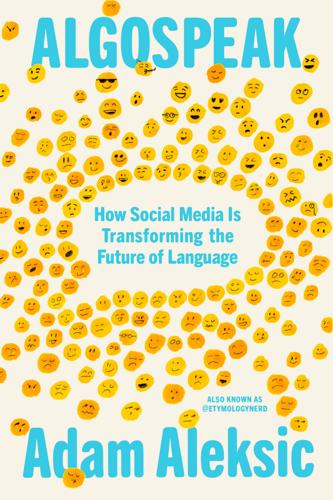
Algospeak: How Social Media Is Transforming the Future of Language
by
Adam Aleksic
Published 15 Jul 2025
There’s still an element of exaggeration, though I’d argue that the former takes it too far, capitalizing on your attention by overly playing into a sense of theatricality. Either way, it’s nothing new. Well before people like Tucker Carlson, this particular tactic has actually been commonplace in media since the “yellow journalism” of the late nineteenth century. In a bid to steal readership from competing papers, newspapers intentionally printed hyperbolized, emotional headlines—effectively boosting their reach by click-baiting and ragebaiting the American population. * * * I’ve always found it fascinating that we talk about attention as something that is “captured” and “held” before eventually being “lost.”
…
,” 65 Wikipedia, 190, 213 Wikitongues, 214 Wiktionary, 12 willy, 22 Wired, 99, 172 wlw, 30 WMAF, 135 woke, 145 “woman throwing soda can” video, 39 women incels and, 124–25, 130, 132–33, 135 talking criticized, 97 word emphasis, 88–89, 95 wordplay, 72 words filter bubbles and, 106, 106 formation process, 110 ideas and, 137 in-groups and, 100, 102, 106 media and, 200 new technology and, 109 original contexts and, 151 retention incentives and, 107, 107 reusing successful, 194–95 spread of, 9, 108–14 staying power of, 51, 53–57 trending, 45, 194–95 work, 147 World Wide Web, 38 writing, 10 X “X ahh,” 154 xenogenders, 204 Xiaohongshu app, 57 Xinjiang, 6 “X is the new Y,” 47–48 X Premium, 181 Y yandere, 112 yass, 147, 161 “yass queen,” 151 yeet, 39, 43, 50, 55 yellow journalism, 68 Yoruba society, 144 you, 63–64, 75 You Have Not Yet Heard Your Favorite Song (McDonald), 167n “You know how X?,” 63 younger generations, 135–36 young women, 97, 149 “You should stop doing X,” 63 YouTube, 17, 38, 40, 70, 81–82, 86–87, 121–22, 134, 156, 167, 172–73, 199, 213 YouTube Shorts, 11, 33, 41, 47, 57, 154 YouTube voice, 94–96 yt, 27, 34 yuri, 112 Z Zara, 174 zesty, 29 Zoomers, 189 Zucc, 152 Zuckerberg, Mark, 152 A B C D E F G H I J K L M N O P Q R S T U V W X Y Z A Note About the Author Adam Aleksic is a linguist and content creator posting educational videos as the “Etymology Nerd” to an audience of more than two million.
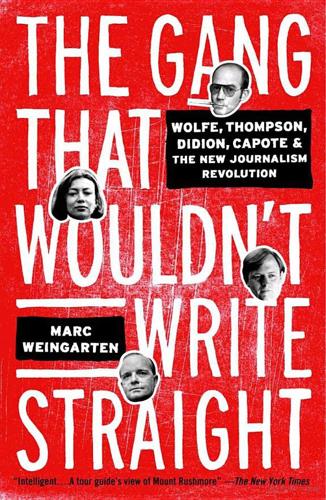
The Gang That Wouldn't Write Straight: Wolfe, Thompson, Didion, Capote, and the New Journalism Revolution
by
Marc Weingarten
Published 12 Dec 2006
Four days before the first installment hit the streets, Bellows messengered two copies of Wolfe’s piece to Shawn at The New Yorker’s offices with a card that read “With my compliments.” What the Tribune received in return for this gesture of good faith was a salvo. Shawn was incensed by this poisonous yellow journalism. He reeled off a letter to the Tribune’s owner, Jock Whitney, calling the piece “murderous” and “certainly libelous,” and urged the Trib’s distinguished publisher to literally stop the presses and pull the piece from the Sunday supplement. If the paper’s legal department did in fact have reason to believe that the story was legally actionable, Whitney would have to give serious thought to killing the story.
…
If an audience existed for well-ordered news stories written in a measured style, there was no need for a reporter to get his or her hands dirty in the muck of idle gossip and circulation-boosting stunts. By 1921, the New York Times, with a circulation of three hundred thousand (five hundred thousand for the Sunday edition), had proven that serious journalism could engage readers as effectively as yellow journalism. But the lure of the gutter is eternal. In the late nineteenth century, William Randolph Hearst’s New York Journal had supplanted Pulitzer’s World as the foremost purveyor of populist reporting, with a staff that had been poached largely from the World itself. Although the Journal’s overheated tone presaged the shrillness of supermarket tabloids, Hearst was not averse to hiring good writers who could leaven the junk with substance.
…
Hemingway: A Life Without Consequences (Houghton Mifflin, Boston 1992). Mills, Hilary. Mailer: A Biography (Empire Books, New York 1982). Morgan, Thomas B. (Self Creations: 13 Impersonalities Holt, (Rinehart and Winston, New York 1965). Morris, James McGrath. The Rose Man of Sing Sing: A True Tale of Life, Murder, and Redemption in the Age of Yellow Journalism (Fordham University Press, New York 2003). Morris, Willie. New York Days (Little, Brown, Boston 1993). Mott, Franklin Luther. American Journalism: A History, 1690–1960 (Macmillan, New York 1962). Orwell, George. Down and Out in Paris and London (Secker & Warburg, London 1986). Perry, Paul.
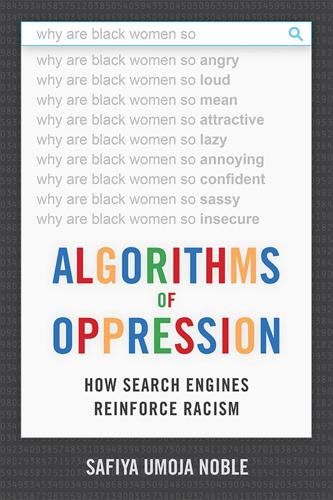
Algorithms of Oppression: How Search Engines Reinforce Racism
by
Safiya Umoja Noble
Published 8 Jan 2018
They include decision-making protocols that favor corporate elites and the powerful, and they are implicated in global economic and social inequality. Deep machine learning, which is using algorithms to replicate human thinking, is predicated on specific values from specific kinds of people—namely, the most powerful institutions in society and those who control them. Diana Ascher,11 in her dissertation on yellow journalism and cultural time orientation in the Department of Information Studies at UCLA, found there was a stark difference between headlines generated by social media managers from the LA Times and those provided by automated, algorithmically driven software, which generated severe backlash on Twitter.
…
Apuzzo, M. (2015, July 22). Dylann Roof, Charleston Shooting Suspect, Is Indicted on Federal Hate Crimes. New York Times. Retrieved from www.nytimes.com. Arreola, V. (2010, October 13). Latinas: We’re So Hot We Broke Google. Ms. Magazine Blog. Retrieved from www.msmagazine.com. Ascher, D. (2017). The New Yellow Journalism. Ph.D. diss., University of California, Los Angeles. Associated Press. (2013, January 16). Calif. Teacher with Past in Porn Loses Appeal. USA Today. Retrieved from www.usatoday.com. Associated Press v. United States. (1945). 326 U.S. 1, US Supreme Court. Bagdikian, B. (1983). The Media Monopoly.
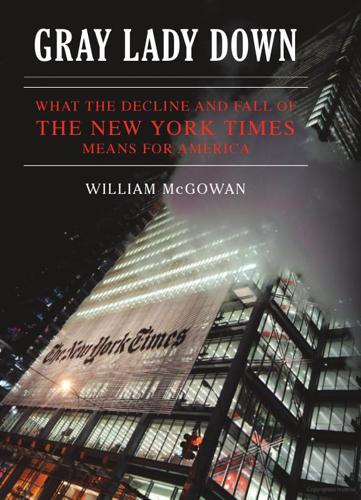
Gray Lady Down: What the Decline and Fall of the New York Times Means for America
by
William McGowan
Published 16 Nov 2010
An accompanying article, also written by Confessore, admitted that “The Times did not verify many aspects of Ms. Fenton’s claims, never interviewed her children, and did not confirm the identity of the man she described as her husband.” Her children were not even in her custody; they had either been placed in foster care or adopted. The shoddy, sometimes yellow journalism in New Orleans after Hurricane Katrina was just a warm-up for the unseemly haste in declaring lacrosse players at Duke University guilty of a heinous rape, which in the Times’ script reflected a pattern of white supremacy deeply embedded in American culture. In reality, it was another fraud.
…
Massing’s piece opened the floodgates to frustration with the Times and fed into a growing leftist campaign to accuse the media of “selling a war to the American public based on lies,” as Arianna Huffington would later write. Some went so far as to accuse the Times of having disinterred the yellow journalism of the Hearst press during the run-up to the Spanish-American War. And most fingers pointed directly at Judy Miller. In New York magazine, Kurt Andersen explained that “because her vivid, terrifying pieces appeared in the liberal Times, she arguably bears more responsibility than any other American outside government for nudging public opinion in favor of war.”

The Wood Age: How One Material Shaped the Whole of Human History
by
Roland Ennos
Published 18 Feb 2021
Between 1880 and 1890 the amount of newsprint used by American newspapers increased sixfold, from just over 100 million pounds annually to almost 700 million. The growth of sensational stories and salacious gossip that filled the new column inches spread alarm among American commentators, who put it down to moral decline rather than to market forces. The approach was known in the United States as yellow journalism, possibly in reference to the color that the cheap newsprint quickly became, and grew highly influential. It has even been suggested that the sensational coverage of the sinking of the USS Maine by Joseph Pulitzer’s New York World and William Randolph Hearst’s New York Journal helped force the United States to start the Spanish-American War of 1898.
…
See plantation forestry tree forks, 90 trees characteristics of, 140–41 diseases and, 263–64 distribution of, 251–58 ecology and climate of, 140–41 exotic, 263–64 See also broad-leaved trees; conifers Tressell, Robert, 224 trestle bridges, 218 Tridacna gigas, 114–15 tropical forests colonialism and, 256–57 deforestation myths and, 247, 248 early climate change and, 28 logging, 257–58, 262 luxury woodworking and, 145 primate food sources, 9 wood variation and, 141 trullo houses, 156 truss bridges, 208, 211, 227 tumuli, 152–53 Tutankhamen, 119, 142 Uluburun Shipwreck, 109 understory trees, 141 Union Chain Bridge, 209 Upper Paleolithic, 58, 70 upright body posture, 4, 5, 25–26 urban development, 176–77, 191, 192–94, 195–96, 219 urban forestry initiatives, 272–74 Urban VIII (Pope), 159 Urnes, 125 USS Maine, 224 USS Monitor, 213 van der Woude, Ad, 175 Védrines, Jules, 236 veneers, 131, 142, 235 See also plywood Venice, 147, 165 Venus of Dolní Vestonice, 101 Vespers of 1610 (Monteverdi), 147 vessels, 140–41 Viking age, 127–29, 135 Waddington, Clive, 79 Warde, Paul, 173–74 Warren, Samuel Hazzledine, 64 Watt, James, 200 Weald, 178, 197 Wernwag, Louis, 217 Westminster Hall, 162–63 West Stow Anglo-Saxon Village, 118 Weyerhaeuser Company, 257 wheelbarrows, 116 Wheeler, Peter, 44 wheels, 110–13, 115–16, 137–38 wheelwrights, 137 Whipple, Cullen, 221 Whiting, Benjamin, xii whole-log construction, 120–23 wickerwork, 95–97 Wilkinson, John, 199, 200 Williams, Michael, 260 William the Conqueror, 127 Windsor chair, 136 Winter Gardens, Sheffield, 240 wood, mechanical properties of anisotropy, 119, 180–81, 235 clambering hypothesis of intelligence and, 12, 13 human ancestors and, 31–33 human evolutionary tools and, 60 modified wood and, 271 musical instruments and, 146 prestressing, 121–22, 122 variations in, 140 wood cellular structure, 14–15 color variations of, 141 combustion of, 36–37, 102 complex structure of, 15–16, 32, 32 joining of, 132–34, 181 onerous properties of, 206, 217 production and use of, 242 steam bending of, 135–36 supply and demand, 123, 177–78, 188, 198, 202, 246 turning of, 134–35 useful properties of, 32–33, 35–37, 42, 164–65, 217 Wood Age, 188, 201, 203, 217, 279 wood as limit to progress, 169–84 availability and, 173–74, 177–78, 254–55 craft industries and, 178–79, 219 craft traditions and, 180, 184, 196, 219 forest industries and, 177–78 harvesting and transport, 175–77, 254–55 Romans, 171–72 ships and, 169–72, 182–84, 206 structural weaknesses and, 180–84 technological stasis and, 172–73, 180, 205–6 time-consuming processes and, 179–80, 230–31 United States and, 225–26 urban development and, 176–77 wood-burning stoves, 202 wood cells, 14–15, 32, 32, 164, 223, 231, 238 wooden objects barrels, 136–37 boats, 80–83, 96–97, 106–8, 114–15, 237 bridges, 122–23, 206, 207, 217, 218 churches, 125 cups, 135 dishes, 135 doors, 132–33 furniture, 136, 142, 236, 239 huts, 52–53 longhouses, 91, 123 machine-made wood screws, 211–22 matches, 230 musical instruments, 146–49, 237 paneling, 164 pencils, 230 piles, 165 round houses, 79 sculpture, 143–45, 163 sleds, 110, 115 snowshoes, 136 technological stasis and, 118 tennis rackets, 136 toothpicks, 230 toys, 231 trackways, 191 travoises, 116 waterwheels, 200 wheelbarrows, 116 wheels, 110–13, 115–16, 137–38, 172 Woodhenge, 154–55 wood laminates (glulam), 232, 239–41, 270–71 wood pulp, 222, 223–24, 225, 241 wood rays, 111 wood technology, 80–81, 111–12 wood types Acacia, 62, 142 alder, 177 ash, 85, 94, 113, 260, 263–64 balsa, 141, 237, 257 beech, 85, 176, 177, 178, 253, 260 birch, 80, 81, 141, 237 box, 147 cedar, 109, 141, 255 chestnut, 94, 145, 260, 264 elm, 95, 128, 137, 165 Eucalyptus, 38, 262, 263, 264 fir, x, 141, 240, 255 hazel, 65, 86, 94, 95, 178, 259 hornbeam, 147 larch, 240, 264 lime, 85, 144–45, 259 mahogany, 145–46, 205 maple, 141, 142, 147 oak, 80, 85, 88, 90, 92, 95, 97, 107, 113, 123, 127, 128, 129, 143, 178, 179, 201, 212, 260, 263, 264, 277 palm, 156–57, 250 pine, xi-xii, xiii, 79, 82, 146, 255, 257 spruce, 66, 146, 148, 219, 255 sycamore, 144, 147 teak, 141, 256, 262 walnut, 145 yew, 64, 73, 107 woomeras, 70 World Atlatl Association, 70–71 World War, I, II, 234–35, 236, 237–38 Wrangham, Richard, 38 Wren, Christopher, 192, 193 Wright, Ted, 107 Wright, Will, 107 Wright Flyer, 234 wrought iron, 208–20 architecture and, 211–12, 219–21 boilers, 217–18 bridges and, 209, 210–11, 218 invention of, 208–9 machine tools and, 214–16 monumental structures and, 213–14 nails, 219–20 rails, 218 railways and, 209–10 replacements for, 228, 240 ships and, 212–13, 214 wood combined with, 216–18 Wyatt, Job, 221 Wyatt, William, 221 Xia Shouqing, 123 yellow journalism, 223–24 Yellow River, 248 Yellowstone to Yukon Conservation Initiative, 277–78 York Minster, 161 Young, Andrew, 110 Zeeuw, Jan de, 189 Acknowledgments This book is the fruit of many years of wandering and pondering, most of all stimulated by my role as an academic at the Universities of Manchester and Hull.

We the Corporations: How American Businesses Won Their Civil Rights
by
Adam Winkler
Published 27 Feb 2018
While most newspapers gushed over the outré decorations and glamorous celebrities on the guest list, Joseph Pulitzer’s New York World turned its readers’ attention to the cost of the party. Who, the World asked, had paid the estimated $200,000 (or approximately $5 million in 2017 dollars) to host this ball?4 Pulitzer, the Hungarian-born newspaper publisher who perfected the art of yellow journalism, often ran eye-catching headlines atop reports of supposed scandals that, in the end, had little truth to them. His insurance stories, however, had substance. Tipped off by one of Hyde’s opponents in an ongoing battle for control of the insurance giant, Pulitzer claimed the bill for the costume party had been paid for by the insurance company.
…
Minnesota involved a Minnesota law that allowed the shuttering of newspapers that created a “public nuisance” by distributing “malicious, scandalous and defamatory” material. The law was designed to silence one man in particular, Jay M. Near, and his sleazy scandal rag, The Saturday Press. Described as “anti-Catholic, anti-Semitic, anti-black, and anti-labor,” Near was a constant thorn in the side of Minneapolis politicians. His vulgar brand of yellow journalism accused them of incompetence, graft, conspiracy, and just about every other crime, rarely backed by a scintilla of evidence. The politicians repaid the favor and attempted to use the public nuisance law to permanently stop the publication of his paper. Near claimed the law infringed his First Amendment press rights as an unconstitutional prior restraint on speech.18 Near was not styled a corporate rights case.
…
A Study in Politics and Race Relations (Collins), 158 witnesses, 24, 164 women’s rights, xv, xvi, xvii, xviii, xxiv, 17, 23–24, 35, 64, 73, 314, 318, 320, 322, 350, 358, 360, 376, 379–82, 395 women’s suffrage, 320 Woods, William Burnham, 132, 152, 154 Woodward, William H., 77 working class, 198, 213–14, 385 working hours, 164, 180–81, 185, 320 workplace safety laws, 49, 99, 164 World War I, 232, 238, 239, 246 World War II, 281, 300, 331, 367 writs of attachment, 250 Yale, Elihu, 26, 382 Yale College, 4, 26 Yale Law Journal, 135 Yale Law School, 382–89, 384 Yale University, 318 yellow fever, 126–27 yellow journalism, 194–95, 241–42 yeoman farmers, 40 You Are There (TV show), 279 Zuccotti Park, 374–75 ABOUT THE AUTHOR ADAM WINKLER is a professor at the University of California, Los Angeles School of Law. His scholarship has been cited by the Supreme Court of the United States on the constitutional rights of corporations and on the Second Amendment.

The Death of Truth: Notes on Falsehood in the Age of Trump
by
Michiko Kakutani
Published 17 Jul 2018
two-thirds of Americans: “ ‘Who Shared It?’ How Americans Decide What News to Trust on Social Media,” American Press Institute, Mar. 20, 2017; Elisa Shearer and Jeffrey Gottfried, “News Use Across Social Media Platforms 2017,” Pew Research Center, Sept. 7, 2017. Fake news is nothing new: “Yellow Journalism,” in Crucible of Empire: The Spanish-American War, PBS, pbs.org; Jacob Soll, “The Long and Brutal History of Fake News,” Politico, Dec. 18, 2016; “Gaius Julius Caesar: The Conquest of Gaul,” Livius.org. man behind the massacre: Kevin Roose, “After Las Vegas Shooting, Fake News Regains Its Megaphone,” New York Times, Oct. 2, 2017; Jennifer Medina, “A New Report on the Las Vegas Gunman Was Released.
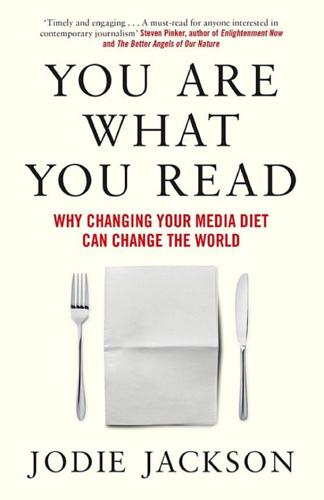
You Are What You Read
by
Jodie Jackson
Published 3 Apr 2019
However, as these luxuries were normalised and grew in abundance – with more channels on cable TV and more printed press, including weekly magazines – the increased competition saw news audiences shrink. The news industry responded by cutting costs and changing their products to compete with the entertainment preferences of the consumer. Stories became jacked up with crime, scandal, celebrities and ‘scientific breakthroughs’. This kind of reporting was termed ‘yellow journalism’ in the 1990s, characterised by its exaggerated, sensationalised and poorly researched content. One newspaper historian describes it as a ‘shrieking, gaudy, sensation-loving, devil-may-care kind of [reporting that] lured the reader by any possible means’.23 News used to be published less frequently when something truly important happened, something that was of national or international concern.

Rationality: What It Is, Why It Seems Scarce, Why It Matters
by
Steven Pinker
Published 14 Oct 2021
Thoughtful leadership can channel an outrage into responsible reform, captured in the politician’s saying “Never let a crisis go to waste.”31 But the history of public outrages suggests they can also empower demagogues and egg impassioned mobs into quagmires and disasters. Overall, I suspect that more good comes from cooler heads assessing harms accurately and responding to them proportionately.32 * * * • • • Outrages cannot become public without media coverage. It was in the aftermath of the Maine explosion that the term “yellow journalism” came into common usage. Even when journalists don’t whip readers into a jingoistic lather, intemperate public reactions are a built-in hazard. I believe journalists have not given enough thought to the way that media coverage can activate our cognitive biases and distort our understanding. Cynics might respond that the journalists couldn’t care less, since the only thing that matters to them is clicks and eyeballs.
…
See mythology mindset; reality mindset See also cognitive illusions; informal fallacies; Index of Biases and Fallacies irrelevant alternatives, sensitivity to, 177–78, 188–92, 350n8 James, William, 37 Jefferson, Thomas, 336, 339 Jenkins, Simon, 303 Jewish humor, 83, 89, 141–42, 192, 246, 262, 265, 325 See also Morgenbesser, Sidney Jewish people conspiracy theories about, 287 the Golden Rule in religion, 68 the Holocaust, 67, 184, 286 as percentage of population, 120 JFK (film), 303 Jindal, Bobby, 357n73 Johnson, Samuel, 111 Johnson, Vinnie “The Microwave,” 131 journalism cognitive biases and, 125 data and context, provision of, 127 editing and fact-checking in, 41, 300–301, 314, 316 innumeracy of, 125–27, 314 recommendations for, 127, 314, 316, 317 and the replicability crisis, 161–62 “yellow journalism,” 125 See also media; pundits judicial system overview of classic illusions of, 321 accountability for lying and, 313 adversarial system of, 41, 316 correlation implying causation and, 260 death penalty, 221, 294, 311, 333 eyewitness testimony, 216, 219 fairness and, 217 false convictions, 216–21 forensic methods in, 216, 219–20 guilt beyond a reasonable doubt, 217 inadmissible evidence, 57–58 juries, 57–58, 63, 202, 217–21 lie detectors in, 219 preponderance of the evidence, 217, 218 presumption of innocence, 217 Prisoner’s Dilemma, 238–42, 244 probability illusions and, 117–18, 129–30, 131, 138–39 prosecutor’s fallacy, 140–41 signal detection and, 202, 216–21, 352n17 See also crime; homicide Jung, Carl, 144 Kahan, Dan, 293, 295, 297–98 Kahneman, Daniel, 7, 9–10, 11, 25–29, 29, 119, 146, 154–55, 156, 190–95, 254, 342n15, 349–50nn6,27 Kaine, Tim, 82 Kant, Immanuel, 69, 327 Kaplan, Robert, 25 Kardashians, 99, 102 Kennedy, John F., 144, 259, 286, 303 Kennedy, John F., Jr., 33 Keynes, John Maynard, 310 Khomeini, Ayatollah, 65 King, Martin Luther, Jr., 328, 339 Kissinger, Henry, 107 knowledge Bayesian reasoning and priors, 157–58 defined as justified true belief, 36, 344n1 logic and requirement to ignore, 95–98 rumors conveying, 308 and trust in institutions, 313–14 used in service of goals, 36–37 Kpelle people, 96–97 Langer, Ellen, 342n17 language ambiguity of conditionals, 140–41 conversational habits, 10, 21, 28, 30, 78–80, 87–88, 308, 343n43 defenses against lying and, 313 as recursive, 71 Laplace, Pierre-Simon, 113–14 Lardner, Ring, 43 La Rochefoucauld, François de, 173 Law and Order (TV show), 238–39 Lebowitz, Fran, 325 left and right (political) Bayesian reasoning and, 297 expressive rationality, 297–98 intellectual roots of, 296 mask-wearing during pandemic and, 296 moral and ideological alignments, 296 moral superiority and, 296 motivated numeracy and, 292–94 openness to evidence and, 311 political bias as asymmetrical, 312–13, 357n73 political bias as bipartisan, 295–96, 297, 312 as religious sects, 296 rise of, factors in, 296–97 and science, sympathy vs. hostility, 284, 295, 297, 312 as tribes, 296 views of protests, 294–95 See also Democratic Party and Democrats; myside bias; politics; Republican Party and Republicans Lehrer, Jonah, 353n13 Leibniz, Gottfried Wilhelm, 74, 93–94, 98, 101 Let’s Make a Deal.

The Contrarian: Peter Thiel and Silicon Valley's Pursuit of Power
by
Max Chafkin
Published 14 Sep 2021
Working through D’Souza he charged Charles Harder, an entertainment lawyer, with undertaking an opposition research operation more extensive than the one he’d attempted years earlier at Clarium. Harder and his team scoured Gawker’s ugliest posts, looking for potential plaintiffs, and dug up memos and public statements by founder Nick Denton that could be used against him in court. In a memo to staff, Denton had written that “the staples of the old yellow journalism are the staples of the new yellow journalism: sex; crime; and even better, sex crime.” Eventually, investigators working for the Thiel-funded effort would interview former employees, find out that Gawker had been using unpaid interns, and arrange for those former unpaid interns to sue the company. Harder would bring several cases against Gawker, including one from a man who claimed to have invented email and who had been mocked by the website, another from an independent journalist whom Gawker had suggested might be suffering from “a paranoid freakout.”

WTF?: What's the Future and Why It's Up to Us
by
Tim O'Reilly
Published 9 Oct 2017
Jonathan Albright, a communications professor who analyzed a network of 300 news sites that were promulgating fake news during the 2016 election, made the same point about programmatic microtargeting. “This is a propaganda machine,” he wrote. “They’re capturing people and then keeping them on an emotional leash and never letting them go.” “Capturing people and then keeping them on an emotional leash” is nothing new. It was at the heart of much media in the days of “yellow journalism” at the turn of the twentieth century, beaten back by journalistic standards for much of the century, then reasserted in its closing decades by talk radio and by Fox News on TV. Social media and its advertising business model has taken the process to its logical conclusion. Targeted social media campaigns will almost certainly be a feature of all future political campaigns.
…
(Harvard Business Review), 204 Wikipedia, 43 Williams, Alan, 141–43 Williams, Evan “Ev,” 226–27 Woetzel, Jonathan, xxiii Wolff, Steve, 79–81 World Wars I and II, results compared, xxv World Wide Web, xii–xiii, 14, 26 Apache server, 99 as collective intelligence of users, 32–35 data collection implications, 40 evolution of webmaster position, 348 as global brain developing a body, 45–47, 158, 235 HTML as a learning by doing software, 339 and Microsoft, 100 services vs. applications, 30–31 Web 2.0, 28–31, 40 See also Internet Yahoo!, 89, 285 Yahoo! Finance, 126 Y Combinator, 98, 306 Yegge, Steve, 111–13 yellow journalism, 208 Yiannopoulos, Milo, 205 Young, Bob, 24 YouTube, 102, 288–89, 316, 342 Zarsky, Tal, 181 Zeckhauser, Richard, 182 Zimmer, John, 77 Zimride, 77 Zipcar, 84–85 Zipline’s on-demand blood-delivery drones, 370 Zuckerberg, Mark, 187, 199, 201–2, 206, 218, 219–20, 302–3 ABOUT THE AUTHOR TIM O’REILLY is the founder and CEO of O’Reilly Media, the company that has been providing the picks and shovels of learning to the Silicon Valley gold rush for the past thirty-five years.

Likewar: The Weaponization of Social Media
by
Peter Warren Singer
and
Emerson T. Brooking
Published 15 Mar 2018
A battle is fought three thousand miles away, and we have the particulars while they are taking the wounded to the hospital.” This intimacy could be manipulated, however. A new generation of newspaper tycoons arose, who turned sensationalism into an art form, led by Harvard dropout turned newspaper baron William Randolph Hearst. His “yellow journalism” (named for the tint of the comics in two competing New York dailies, Hearst’s New York Journal and Joseph Pulitzer’s New York World) was the kind of wild rumormongering American readers couldn’t get enough of—and that helped spark the Spanish-American War of 1898. When one of his photographers begged to return home from Spanish-controlled Cuba because nothing was happening, Hearst cabled back: “Please remain.
…
See leaders memes, 186–93 open access to, 193–202 radio use in, 32 real-time reporting of, 62–64 robo-reality wars, 248–57 Russia and, 111 social media and, 15–16 treason in, 266 types of, 184 weaponization of information, 181–86 Wars of German Unification, 30 Warzel, Charlie, 175 Washington, George, 158 Web 2.0, 45 web brigades, 110–11 webcams, 41, 254 weblogs, 44 WeChat, 50–51, 100, 101 Weibo, 130, 162 Welch, Edgar, 127–37 WhatsApp, 5, 50, 247 Wheeler, John Archibald, 26 white supremacists, 115, 170, 188–89, 232, 237–39 Wikipedia, 45, 78, 98 Williams, Evan, 19 Winfrey, Oprah, 119 Winnie-the-Pooh, 98 Winter, Charlie, 152 women, harassment of, 229, 238 Woolley, Samuel, 145 World War I, 181–82 World War II the Blitz, 18 computer use, 25 German invasion of France, 7–8 intelligence gathering, 78 Marshall Plan, 157–58 World Wide Web, 38–39, 95 See also internet Wyden, Ron, 224 X Xi Jinping, 97, 98, 99, 101 Xue, Charles, 99 Y Yanukovych, Viktor, 203 yellow journalism, 31 Yiannopoulos, Milo, 238 Yoda, 163 YouTube Al Qaeda, 234 anti-hate organizations, 172 censorship, 92, 231 content creation, 58, 247 copyright algorithm, 226 flat-earthers, 123 flight MH17, 72 Google and, 49 Google Brain project, 249 “Macaca” moment, 55–57 military training and recruitment, 9 origin of, 218–19 #Pizzagate incident, 128 regulation, 230, 250 Russia Today (RT), 107–8 terrorism and, 151–52 training videos, 9, 198, 234 Tunisian slaughter, 85 war in real time, 193 Yuan Zhifa, 96 Z Zapatista National Liberation Army (EZLN), 40–41 Zappa, Frank, 72 Zeitzoff, Thomas, 195–96 Zhirinovsky, Vladimir, 105 Zimmerman, Amy, 166 Zuckerberg, Mark Arab Spring, 85 fake news profits, 119 information gathering, 57 origin of Facebook, 42–47, 260 political leadership, 223, 242, 268 scale and power of, 221 U.S. presidential election (2016), 240, 241, 243 10,590 Meters Below Sea Level, Mariana Trench, Pacific Ocean Sometimes history is made in the dark.
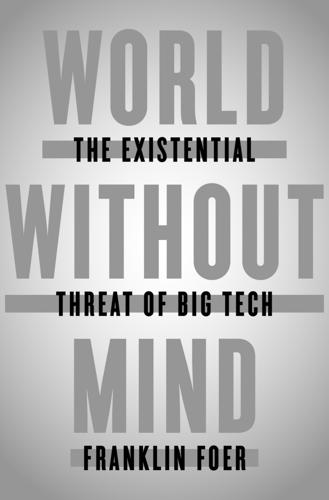
World Without Mind: The Existential Threat of Big Tech
by
Franklin Foer
Published 31 Aug 2017
But partisanship was just a toddler phase for the press. Before newspapers could enter into respectability, they needed to go through an adolescence of sensationalism. Over the course of the nineteenth century, a new generation of press barons (William Randolph Hearst, Joseph Pulitzer) came to see the massive profits to be made in yellow journalism—overhyped, tawdry stories about crime and gossip, with lavish illustrations and blunt headlines. The sensationalist press generated sizable audiences—a large mass of consumers who could be persuaded to buy the new products rolling out of the factories and sold in urban department stores. “The pull of dollars towards sensationalism helped move newspapers away from the political parties,” the media historian Michael Schudson writes.

Tesla: Inventor of the Electrical Age
by
W. Bernard Carlson
Published 11 May 2013
Although Tesla had not yet worked out the business details, reporters noted that he “was most enthusiastic in his veiled references to the financial assistance he has received.”38 Never a fan of the New York tabloids, Morgan was unimpressed with Tesla’s newspaper coverage and perhaps even annoyed.39 As the Literary Digest noted, “The daily papers treat [Tesla’s] various pronunciamentos each after its kind, the yellow journals with weird pictures and big headlines, the more serious ones with skeptical paragraphs.”40 However, as the negotiations with Andrew Carnegie and the other steel barons came to a close, Morgan assigned one of his partners, Charles Steele, to work with Tesla. Steele asked Tesla to draft a letter of agreement in which Morgan would advance funds to Tesla in return for a 51% share of Tesla’s wireless patents.
…
Another view is that he allowed himself to be unduly influenced by his friends in the press such as T. C. Martin and Johnson.27 But we can also ask a counterfactual question: if Tesla had kept his illusions modest, would anyone have paid any attention to his inventions in the mid-1890s? To some extent, Tesla was responding to his era’s “yellow journalism.” As the large New York tabloids vied for circulation in the 1890s, they sought out stories with oversized claims, and with each successive retelling the claims had to be further exaggerated.28 The scale of Tesla’s illusions is thus both a product of his personality as well as the way that popular culture was then taking shape.

The Rise and Fall of American Growth: The U.S. Standard of Living Since the Civil War (The Princeton Economic History of the Western World)
by
Robert J. Gordon
Published 12 Jan 2016
The fact that the average household, including the lowest stratum, purchased 3.1 different newspapers is one of the most surprising in this chapter.6 The fastest growth occurred in 1870–1900, by which time newspapers had become firmly established as the main source of information and entertainment for a growing population.7 Color presses were introduced in the 1890s and were first used to produce color comics and supplements.8 By the early twentieth century, newspapers had extended their content far beyond the news itself and added “gossip columns, travel and leisure advice, color comics, and sporting results.”9 The interval from 1880 to 1905 was the age of “yellow journalism,” likely named after the “Yellow Kid” comic strip character popular at the time. Metropolitan newspapers were locked in circulation wars in which success depended on publishing ever more sensational and sometimes sordid stories featuring “violence, sex, catastrophe, and mayhem.” The most famous circulation battle was in the late 1890s, between Joseph Pulitzer’s New York World and William Randolph Hearst’s New York Journal.
…
Cain, Louis P., and Paterson, Donald G. (2013). “Children of Eve: Population and Well-being in History,” Population and Development Review 39, no. 3. Calder, Lendol. (1999). Financing the American Dream: A Cultural History of Consumer Credit. Princeton, NJ: Princeton University Press. Campbell, W. Joseph. (2001). Yellow Journalism: Puncturing the Myths, Defining the Legacies. Westport, CT: Praeger. Cannon, Brian Q. (2000). “Power Relations: Western Rural Electric Cooperatives and the New Deal,” The Western Historical Quarterly 31, no. 2 (summer): 133–60. Carbone, June, and Cahn, Naomi. (2014). Marriage Markets: How Inequality Is Remaking the American Family.
…
See labor force working class: American, versus European (1870), 29; housing for, 102–4, 111; life of (1870), 56–57; Riis on, 97 working hours, 10, 258–61, 325; in 1940, 520; decline in, 13–14, 326–27; eight-hour day, 543 Works Progress Administration (WPA), 315 World War II: aircraft production during, 397; contribution to Great Leap of, 537; economy during, 548–53; food rationing during, 335; Great Leap Forward and, 563–64; movies during, 414–15; productivity increase during, 18, 540, 546–47; radio news broadcasts of, 197, 413–14; women in labor force during, 504 World Wide Web, 454, 459; See also Internet Wozniak, Steve, 452 Wright Brothers, 568 Xerox Company, 442, 451 X-rays, 226 yellow journalism, 177 Young, David M., 144 youth: in 1870, 58–59; in labor force, 248, 251–52; social media used by, 457; after World War II, 499–500 YouTube, 456 zoning laws, 649 Zuckerberg, Mark, 457, 567 Zworykin, Vladimir, 412–14 THE PRINCETON ECONOMIC HISTORY OF THE WESTERN WORLD Joel Mokyr, Series Editor Growth in a Traditional Society: The French Countryside, 1450–1815 by Philip T.

Reminiscences of a Stock Operator
by
Edwin Lefèvre
and
William J. O'Neil
Published 14 May 1923
The paper’s headquarters, the New York World Building, shown below, was the tallest office tower in the world when completed in 1890. It was torn down in 1955 to build a new ramp to the Brooklyn Bridge. The World became one of the first papers to run color in 1896, and its Yellow Kid cartoon lent its name to the term “yellow journalism,” which means sensationalism. The paper earned that sobriquet amid a series of fierce circulation battles with its archrival, the New York Journal American, owned by William Randolph Hearst. Pulitzer was best known for running stories that encouraged the thriving new immigrant community to read his paper, and many had great social impact, particularly its campaign against unsafe tenements.
…
Appleton & Co., 1895). 9 Richard L. Frey, According to Hoyle: The Rules of Games (Random House. 1970), 212. 10 Mark Howard, “Bucking the Tiger: The Traditional Game of Faro,” Barbary Coast Vigilance Committee. 2004, www.bcvc.net/faro/. 11 Hugh Thomas, Cuba, or, the Pursuit of Freedom (1998), 404. 12 W. Joseph Campbell, Yellow Journalism (2003), 25. 13 Smitten, Jesse Livermore, 114. 14 John F. Stover, Historical Atlas of the American Railroads (1999), 90. 15 Henry Clews, Fifty Years in Wall Street (New York: Irving Publishing Company, 1908), 398. 16 Ibid. 17 Roger H. Grant, Erie Lackawanna (1996), 80. 18 John F. Stover, Historical Atlas of the American Railroads (1999), 71.
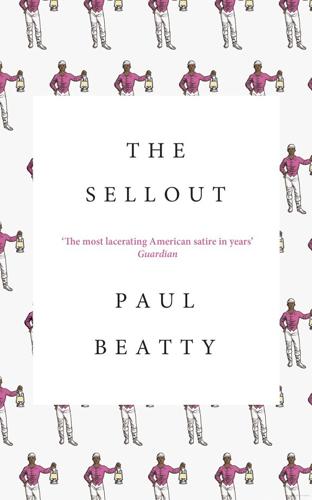
The Sellout: A Novel
by
Paul Beatty
Published 2 Mar 2016
A long time ago, my father taught me that whenever you see a question on the cover of a news magazine, the answer is always “No,” because the editorial staff knows that questions with “Yes” answers would, like graphic cigarette warnings and close-ups of pus-oozing genitalia that tend not to deter but encourage smoking and unsafe sex, scare the reader off. So you get yellow journalism like: O. J. Simpson and Race: Will the Verdict Split America? No. Has TV Gone Too Far? No. Is Anti-Semitism on the March Again? No, because it never halted. Has Public Education Clipped the Wings of the White Child? No, because a week after that issue hit the newsstands, five white kids, their backpacks filled with books, rape whistles, and mace, hopped off a rented school bus and attempted to reintegrate Chaff Middle School, where Assistant Principal Charisma Molina stood in the doorway, barring entrance to her quasi-segregated institution.

The Authoritarian Moment: How the Left Weaponized America's Institutions Against Dissent
by
Ben Shapiro
Published 26 Jul 2021
The notion of a political objectivity in journalism would have seemed bizarre to the Founding Fathers: Thomas Jefferson employed journalist James Callendar to muckrake on behalf of his favored causes and to undermine his enemies.26 For well over a century, newspapers openly identified with political parties. The era of yellow journalism was markedly free of concerns about objectivity. Only in the aftermath of World War I, with America’s intelligentsia falling out of love with democracy itself, did the press begin to conceive of itself as “objective”—as guardian of a unique fact-finding process that could provide audiences with information beyond the realm of political debate.
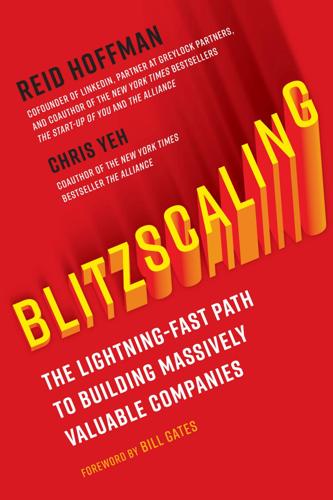
Blitzscaling: The Lightning-Fast Path to Building Massively Valuable Companies
by
Reid Hoffman
and
Chris Yeh
Published 14 Apr 2018
It’s possible but unlikely that social media will have a qualitatively different impact than any previous form of media, but we generally find that when people start saying, “This time it’s different,” it usually isn’t. New technologies have always had the potential to lead to new problems. Newspapers led to demagogic “yellow journalism.” Advertising led to snake oil salesmen. The answer wasn’t to ban newspapers or advertising, but to build policies and institutions to mitigate the risks involved. That’s why we have libel laws and regulators like the FCC. And with time, audiences themselves become more sophisticated and develop their own “immune responses.”

The New Rules of War: Victory in the Age of Durable Disorder
by
Sean McFate
Published 22 Jan 2019
Department of Justice charges thirteen Russians: United States of America vs Internet Research Agency LLC, et al., no 1:18-cr-00032-DLF (DC, US District Court, District of Columbia, 16 February 2018), www.justice.gov/file/1035477/download. People v Moody, No 4582-84, slip op at 3 (NY, Supreme Court, New York County, 27 June 1986). 7. USS Maine: The USS Maine blew up in Havana’s harbor in 1898, and an inflamed American public blamed Spain. Yellow journalism hyped the situation, and the United States marched to war against Spain crying, “Remember the Maine!” Actually, the Maine sank due to an internal explosion and was not the work of Madrid’s skullduggery. 8. Putin behind the Moscow bombings: John Dunlop, The Moscow Bombings of September 1999: Examinations of Russian Terrorist Attacks at the Onset of Vladimir Putin’s rule, vol. 110 (Columbia University Press, 2014); Amy Knight, “Finally, We Know about the Moscow Bombings,” New York Review of Books 22 November 2012; see also US Congress, House, Committee on Foreign Affairs, Russia: Rebuilding the Iron Curtain, Hearing before the Committee on Foreign Affairs, 110th Cong., 1st sess., 17 May 2007 (testimony by David Satter, senior fellow, Hudson Institute), https://web.archive.org/web/20110927065706/http://www.hudson.org/files/publications/SatterHouseTestimony2007.pdf. 9.

The Way That Leads Among the Lost: Life, Death, and Hope in Mexico City's Anexos
by
Angela Garcia
Published 30 Apr 2024
They either described anexos as clandestine and hellish, teeming with people deprived of their liberty and subjected to horrific violence, or as hideouts for gang members and narcos. One televised nightly news segment on anexos opened onto a dramatic scene of police pulling women out of a run-down building. The reporter called the women esclavas, slaves. I dismissed these stories as yellow journalism. A few months before Health City’s master plan was revealed in 2010, hit men attacked an anexo in Ciudad Juárez and killed seventeen people. Thirteen days later there was an attack at another anexo that killed ten people. The Mexican government called anexos asilos, asylums, for drug dealers.
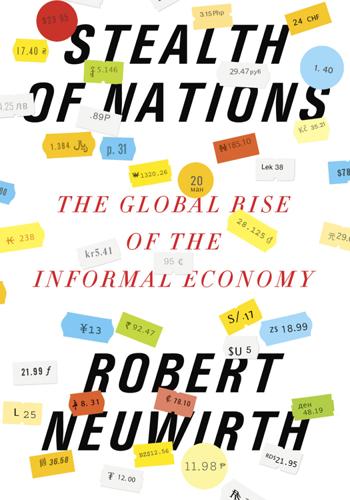
Stealth of Nations
by
Robert Neuwirth
Published 18 Oct 2011
One recent study of migration and street economies in southern Europe concluded that there was a “connection between working in the underground economy and deviant behavior,” though it provided no hard evidence that this link actually exists. In a similar fashion, a December 27, 2010, wire service dispatch in the Turkish newspaper Hürriyet began with a classic yellow-journalism lead—“Unregistered economic activity is causing serious problems across the world”—but the rest of the article simply compared the estimated size of the informal economy in Turkey with that in other countries and offered absolutely no evidence of any problems this had actually created. Still, simply asserting that there’s a huge problem makes readers think it’s true.
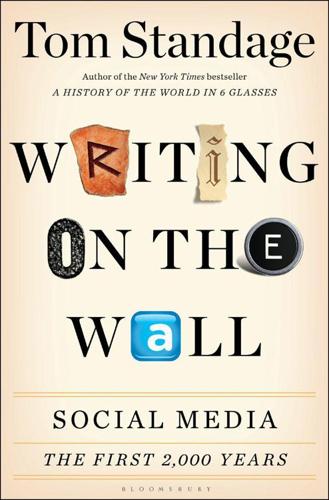
Writing on the Wall: Social Media - the First 2,000 Years
by
Tom Standage
Published 14 Oct 2013
Having turned the Examiner around, Hearst bought the New York Morning Journal and initiated a vicious b increasingly b with attle with Pulitzer that drove the circulation of individual newspapers above one million copies for the first time. The two tried to outdo each other in sensationalism, inventing stories and faking pictures in what came to be known as “yellow journalism.” Most famously, Hearst used his papers to stoke anti-Spanish sentiment in 1898, printing lurid accounts of Spanish persecution in Cuba and helping turn public opinion in favor of war with Spain. Hearst is supposed to have told one of his artists, who wished to return from Cuba because not much was happening, “You furnish the pictures, and I’ll furnish the war.”
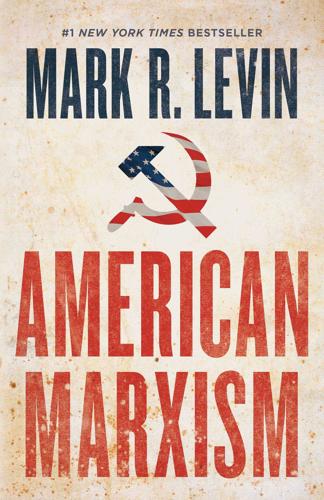
American Marxism
by
Mark R. Levin
Published 12 Jul 2021
By the attention it gives their misdeeds it makes criminals heroic and politicians large than life….”8 I would go a step further—the press not only starts and prolongs quarrels, but thrives today on the exploitation of issues and agendas that serve the purposes of the various Marxist movements, and in doing so inflames and divides the entire nation along ideological lines. “In reviewing the persistent tendency of the newspapers to corrupt, I shall cite a passage from [author] James Fenimore Cooper,” writes Weaver. “Though Cooper lived before the advent of yellow journalism, he seems to have stated the essential situation with a truth and eloquence impossible to improve on when he said in The American Democrat: ‘As the press of this country now exists, it would seem to be expressly devised by the great agent of mischief, to depress and destroy all that is good, and to elevate and advance all that is evil in the nation.
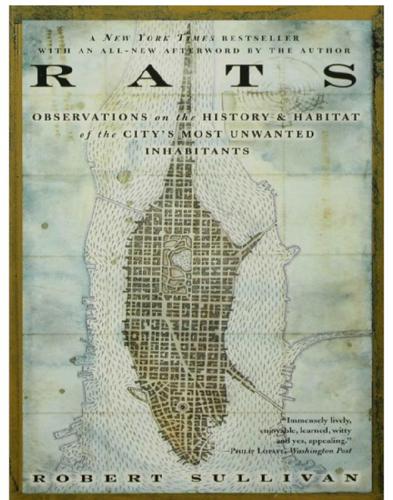
Rats
by
Robert Sullivan
Published 8 May 2009
He proposed life imprisonment for anyone claiming there was plague in San Francisco. He suggested that Joseph Kinyoun had planted plague bacilli on the Chinese man who died. Soon, all sides could agree on one thing: Dr. Kinyoun was a problem. The attacks against Kinyoun were notably malicious and slanderous even in a town with a long history of yellow journalism. Kinyoun held fast; his arrogance made him immune to some extent. He turned down bribes. He went on trial in the city for contempt and was eventually found innocent. He was constantly being lampooned in cartoons such as the one that showed him being injected in the head with plague serum. His work was described by the press as "stupid and malignant."
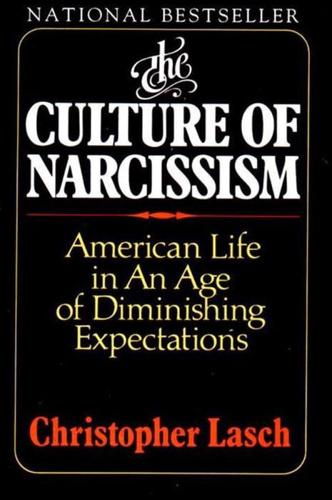
The Culture of Narcissism: American Life in an Age of Diminishing Expectations
by
Christopher Lasch
Published 1 Jan 1978
The accumulation of elaborate statistical records arose from management's attempt to reduce winning to a routine, to measure efficient performance. The athletic contest itself surrounded by a vast apparatus of information and promotion, now appeared almost incidental to the expensive preparation required ' , " " , , to stage it. The rise of a new kind of journalism-the yellow journalism pioneered by Hearst and Pulitzer, which sold sensations instead The Degradation of Sport : 121 of reporting news-helped to professionalize amateur athletics, to assimilate sport to promotion, and to make professional athletics into a major industry. Until the twenties, professional sports, where they existed at all, attracted little of the public attention lavished on college football.
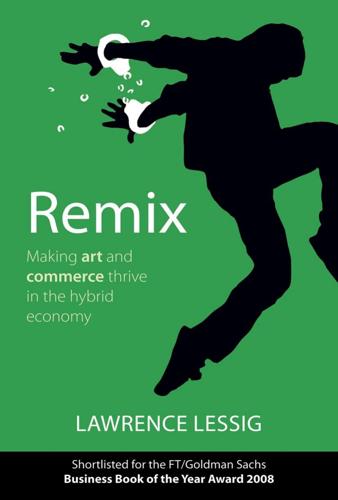
Remix: Making Art and Commerce Thrive in the Hybrid Economy
by
Lawrence Lessig
Published 2 Jan 2009
And “the most important” part of the story, “regardless of any legal impact it had,” was that after this battle, kids from around the world were fighting back. They were “fighting their own battles now, because they have the confidence to do what they can.” This was the part of the story that I had heard about. It was the part, in my perverse yellow-journalism sense, I wanted Lawver to tell me more about. But to my surprise, and (eventual) delight, Lawver was not so interested in trashing Warner. Her real interest was in making me understand a different, less-reported part of the story. For this was not simply a story of the big bad media company.

The Constitution of Knowledge: A Defense of Truth
by
Jonathan Rauch
Published 21 Jun 2021
Reality-based journalists can be proud of doing their jobs with determination and professionalism during the Trump administration despite relentless vilification by the president and his many allies. At the same time, though, their commitment to reporting as objectively as they can—a hard-won norm which emerged from more than a century of partisanship and yellow journalism—has come under challenge as never before. Mainstream media outlets find themselves under growing pressure from activists and interest groups within their own ranks to bend coverage toward social justice (as defined by the political left, usually) and to deplatform, or at least disfavor, contrary views.
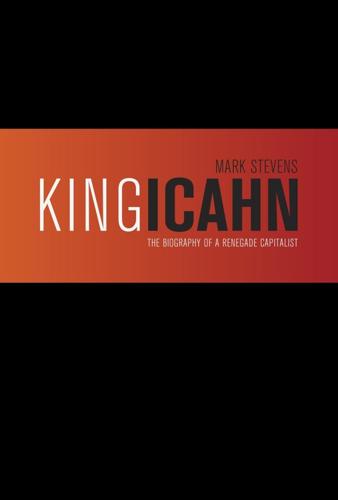
King Icahn: The Biography of a Renegade Capitalist
by
Mark Stevens
Published 31 May 1993
Privatization would prove to be a watershed in Icahn’s fragile alliance with organized labor. The Ozark acquisition, the revamping of the route structure and the initial turnaround in reported earning led the unions to believe that they had made the right choice between Icahn and Lorenzo. Perhaps all the Wall Street backroom wheeler-dealer talk was nothing more than yellow journalism. Perhaps Icahn was, as he portrayed himself, a 1980s Renaissance man: part financial genius, part business builder, always a man of his word. The optimism that prevailed during the honeymoon period, though, turned quickly to anger and pessimism as the details of the privatization leaked to the unions.
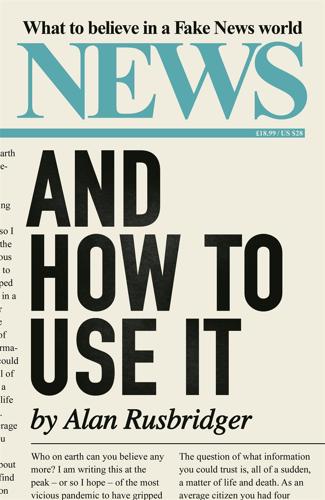
News and How to Use It: What to Believe in a Fake News World
by
Alan Rusbridger
Published 26 Nov 2020
Today the membership of the Organization of News Ombudsmen and Standards Editors (founded in 1980 and known as ONO) comprises news ombudspeople, readers’ representatives and standards editors from around the world, working online, in print, and in television and radio. It has more than fifty members in North and South America, Europe, and parts of the Middle East and Asia. The idea of the ombudsperson really took off in America, where the principles of objectivity (SEE: IMPARTIALITY) and news you can trust were established in the battles over yellow journalism in the 1920s. In the decades that followed, the American Society of News Editors inculcated American journalists with the principles of ‘sincerity, truthfulness, accuracy and impartiality’ and so it was a natural cultural progression to the idea of ombudspeople. In the UK, meanwhile, media self-regulation was wrenched, kicking and screaming, from a press desperate to fight off government press legislation.
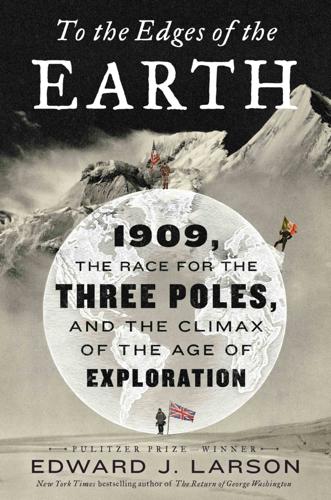
To the Edges of the Earth: 1909, the Race for the Three Poles, and the Climax of the Age of Exploration
by
Edward J. Larson
Published 13 Mar 2018
And when the senator ordered the post office to intercept and return all letters and packages from the duke to his daughter, including one reportedly containing an engagement ring, the press and public made the elder Elkins the villain. Some later accounts had it costing the ambitious senator the presidency.3 New York’s Evening Post denounced the prying coverage as yellow journalism at its worst, and the Times of London agreed, but both reprinted the core of it, sent reporters scurrying after the latest scoop, and clearly sided with the star-crossed lovers, if for no other reason than that the union would sell papers.4 “The mystery surrounding the Duke of the Abruzzi and Miss Elkins, so far as the marriage which an inquisitive Press is anxious to arrange between them is concerned, remains as deep as ever,” the Times noted in late 1908.5 “The Duke of the Abruzzi might, were he so minded, find a wife in almost any royal household in Europe,” the New York Times added.
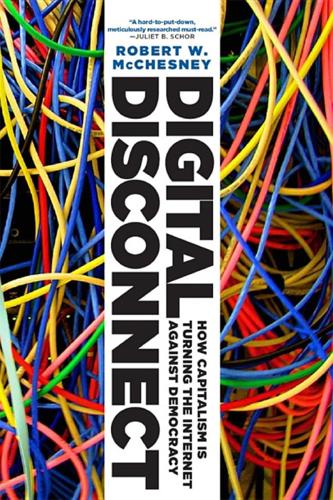
Digital Disconnect: How Capitalism Is Turning the Internet Against Democracy
by
Robert W. McChesney
Published 5 Mar 2013
Large cities often had over a dozen competing daily newspapers; papers came and went, and nearly every newspaper was owned by a single publisher who also was the editor or had a strong say in the editorial direction.63 But capitalism imposed its logic. In some cases profit-hungry publishers found that sensationalism, what came to be called yellow journalism, was a lucrative course. Bribery of journalists, showing favoritism toward advertisers, and many other unethical practices were common. Most important, by the 1890s newspaper markets began to shift from competitive to oligopolistic, even monopolistic. Although revenues and population continued to increase sharply, the overall number of newspapers began to stagnate and then fall.

The Great Halifax Explosion: A World War I Story of Treachery, Tragedy, and Extraordinary Heroism
by
John U. Bacon
Published 7 Nov 2017
Add to this the persistent rumors that Captain Le Médec’s last-second decision to cut across Imo’s bow was actually intentional, designed to create the collision, fire, and explosion that followed, and the men of Mont-Blanc clearly had their work cut out for them when it came to public opinion. An editorial in the Truro Daily News expressed a common opinion when it said those responsible for “ ‘such a needless collision’ in clear weather ‘should be hung in good old-fashioned style’ from the yardarm.” Yellow journalism was still in vogue, and was practiced widely. But even if it hadn’t been, people recovering from the greatest man-made disaster in North American history should expect some answers. If the investigation proved some were guilty of criminal negligence or worse, the death penalty would not seem unreasonable at a time when sons overseas were being executed for desertion.

Cocaine Nation: How the White Trade Took Over the World
by
Thomas Feiling
Published 20 Jul 2010
The most worrisome mind-altering substance at the turn of the century was not cocaine or opium, but alcohol. Alcoholic drinks had been popular in the United States since the founding of the Republic, but from the eighteenth century onwards, drinkers had to contend with a strong temperance movement. American newspapers were chock-a-block with the yellow journalism of zealous moral entrepreneurs, who regularly claimed that booze lay at the root of most of the crime, insanity, poverty, divorce, illegitimacy and business failures in the United States. So when cocaine use was banned, it was as a small part of a much broader movement against all kinds of intoxication.

On the Grand Trunk Road: A Journey Into South Asia
by
Steve Coll
Published 29 Mar 2009
Jam stood and embraced him, then made the introductions. “I am his servant,” Rehman said. “No, I am his servant,” Jam replied. Then he ushered Rehman out. Our conversation was cordial, occasionally intense. Jam criticized Kamran repeatedly, calling him an agent of intelligence services. Kamran’s reporting was never correct; it was “yellow journalism” against Jam’s government. Yet he said that he liked Kamran personally and did not want any harm to come to him. I suggested that there were legal means available to control the press if Jam felt it was irresponsible, and he said, yes, there were, but he went on to talk animatedly about how ineffective the legal means were because the government could never win lawsuits and reporters never felt the pinch of having to pay legal bills.
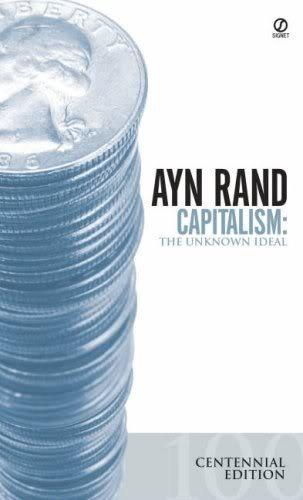
Capitalism: the unknown ideal
by
Ayn Rand
Published 15 Aug 1966
“EXTREMISM,” OR THE ART OF SMEARING by Ayn Rand Among the many symptoms of today’s moral bankruptcy, the performance of the so-called “moderates” at the Republican National Convention was the climax, at least to date. It was an attempt to institutionalize smears as an instrument of national policy—to raise those smears from the private gutters of yellow journalism to the public summit of a proposed inclusion in a political party platform. The “moderates” were demanding a repudiation of “extremism” without any definition of that term. Ignoring repeated challenges to define what they meant by “extremism,” substituting vituperation for identification, they kept the debate on the level of concretes and would not name the wider abstractions or principles involved.

A Paradise Built in Hell: Extraordinary Communities That Arise in Disaster
by
Rebecca Solnit
Published 31 Aug 2010
In its 1910 published version, it begins “The war against war is going to be no holiday excursion or camping party.” He had joined the Anti-Imperialist League founded in 1898 to oppose the United States’ war against Spain and its annexation of Spain’s former colony of the Philippines. The public appetite for war had been whipped up by the newspapers during the era of sensationalistic “yellow journalism,” though James tended to believe that there was an inherent appetite for war. Many prominent intellectuals and public figures, including writer Mark Twain (who was vice president of the Anti-Imperialist League from 1901 to 1910), were ferociously opposed to the explicit amorality of that war and feared the transformation of their country into an imperial power.
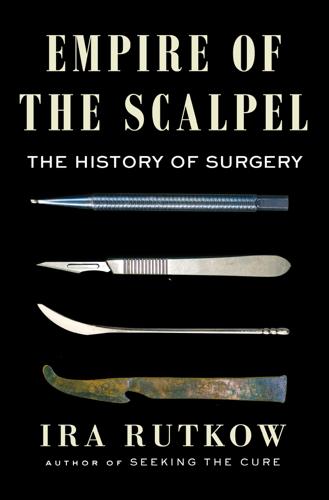
Empire of the Scalpel: The History of Surgery
by
Ira Rutkow
Published 8 Mar 2022
“Surgeon Explains Valentino’s Death,” New York Times, September 4, 1926, 3. 16. “Valentino Better; Passes the Crisis,” New York Times, August 20, 1926, 2. 17. “Valentino Sinking; Second Crisis Near; Pleurisy Spreads,” New York Times, August 23, 1926, 1. 18. Ibid. 19. Editorial, “Death of Valentino and Yellow Journalism,” The Nation, September 8, 1926, 207. 20. “Thousands in Riot at Valentino Bier,” New York Times, August 25, 1926, 1. 21. H. Lilienthal, “Resection of the Lung for Suppurative Infections with a Report Based on 31 Operative Cases in Which Resection Was Done or Intended,” Annals of Surgery 65 (1922): 257. 22.
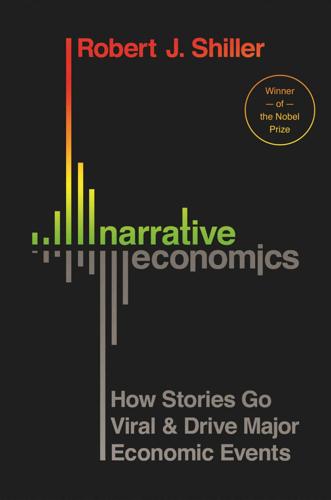
Narrative Economics: How Stories Go Viral and Drive Major Economic Events
by
Robert J. Shiller
Published 14 Oct 2019
Albuquerque: University of New Mexico Press. Banerjee, Abhijit. 1992. “A Simple Model of Herd Behavior.” Quarterly Journal of Economics 107(3):797–817. Banerjee, Abhijit, and Drew Fudenberg. 2004. “Word-of-Mouth Learning.” Games and Economic Behavior 46(1):1–22. Banks, Elizabeth L. 1898. “American Yellow Journalism.” Nineteenth Century, August, 328–40. Bardhan, Nilanjana. 2001. “Transnational AIDS-HIV News Narratives: A Critical Exploration of Overarching Frames.” Mass Communication and Society 4(3):283–309. Barthes, Roland. 2013 [1984]. Mythologies. New York: Hill and Wang. Bartholomew, D. J. 1982.

The Billionaire Raj: A Journey Through India's New Gilded Age
by
James Crabtree
Published 2 Jul 2018
To his admirers, Goswami was a muckraker in the noble tradition of the campaigning magazines of late nineteenth-century America, which picked fights with corporate monopolies and corrupt politicians. Yet his influence was just as often lamented by those who saw in him echoes of the fearmongering “yellow journalism” of US publisher William Randolph Hearst. In 2012, liberal academic Madhu Kishwar laid out this broader critique in an open letter, comparing Goswami’s show to a kangaroo court in which its host ignored “the necessary dividing line between journalist and crusader.”6 In Goswami’s style, critics saw an Indian variant of what became known later as “post-truth” politics, in which the nightly clash of guests deepened social divisions but added little to public understanding.
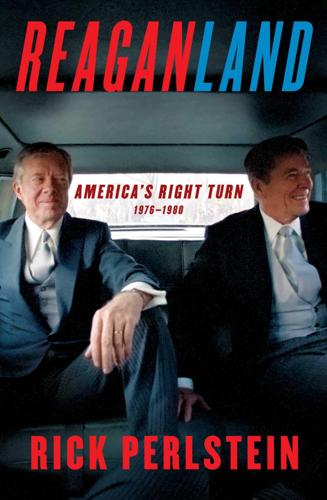
Reaganland: America's Right Turn 1976-1980
by
Rick Perlstein
Published 17 Aug 2020
Hello from the cracks in the sidewalk of N.Y.C. and from these ants that dwell in these cracks… It was signed, “Son of Sam.” Breslin offered his services should the killer wish to turn himself in to authorities. (The story shared the front page with an image of burning cars captioned, “Two Dead in Chicago Riot.”) The rival New York Post, recently purchased by the Australian yellow-journalism magnate Rupert Murdoch, ramped up the sensationalism to keep pace. You could read the terror at a distance, just walking down the street; an inordinate number of women cut their hair in Dorothy Hamill bobs. Son of Sam’s victims all had long hair. A week later, another alleged serial killer was on the loose—an interstate offender.
…
The remaining quotes are divided between the newscasts at VTVNA and this article. “Throughout the day” NBC News, December 3, 1979, VTVNA. “engraved invitation” “The Shah, Seven Presidents Later,” WP, December 21, 1979. “TEDDY IS THE TOAST” New York Post, December 9, 1979; MFTVE, 26:37; Patrick Brogan, “Citizen Murdoch: Can Yellow Journalism Cover the World,” New Republic, October 10, 1982. solemn event UPI, December 5, 1979; “1980 Democratic Presidential Nomination: Remarks Announcing Candidacy,” December 4, 1979, APP. pollsters at NBC AP, December 1, 1979. much smaller survey ABC News, December 7, 1979, VTVNA. “I’m sorry” Joe Klein, “Camelot Collapsing,” NYT Magazine, December 24, 1979.
…
New York Stock Exchange Kim Phillips-Fein, Invisible Hands: The Businessmen’s Crusade Against the New Deal (New York: Norton, 2009), 236. “U.S. Geological Survey” Green, Reagan’s Reign of Error, 106. credit controls Stacey L. Schreft, “Credit Controls: 1980,” Economic Review, November/December 1990. Rupert Murdoch Jimmy Carter, White House Diary, 402; Patrick Brogan, “Citizen Murdoch: Can Yellow Journalism Cover the World,” New Republic, October 10, 1982. United Nations ambassador Witcover and Germond, Blue Smoke Mirrors, 152. “Friends, Herbert Hoi-ver” Carroll O’Connor for Kennedy ad, YouTube.com, accessed April 20, 2020; Elliot Curson interview, Fresh Air, WHYY, 1980. New York City subway system White, America In Search of Itself, 299.
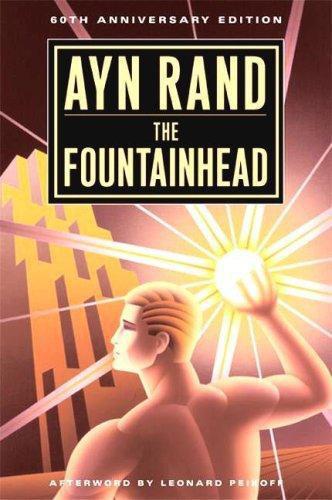
The Fountainhead
by
Ayn Rand
Published 1 Jan 1943
If you had just met Father, and he were working for the Wynand papers, that would be exactly the right thing to say. But not with me. That’s what I’d expect you to say and I don’t like to hear what I expect. It would be much more interesting if you said that the Wynand papers are a contemptible dump heap of yellow journalism and all their writers put together aren’t worth two bits.” “Is that what you really think of them?” “Not at all. But I don’t like people who try to say only what they think I think.” “Thanks. I’ll need your help. I’ve never met anyone ... oh, no, of course, that’s what you didn’t want me to say.
…
She turned and went on to her bedroom, and heard him closing the guest-room door. “Is it not appropriate,” wrote Lancelot Clokey in a syndicated article, “that Howard Roark is being defended by the Wynand papers? If anyone doubts the moral issues involved in this appalling case, here is the proof of what’s what and who stands where. The Wynand papers—that stronghold of yellow journalism, vulgarity, corruption and muckraking, that organized insult to public taste and decency, that intellectual underworld ruled by a man who has less conception of principles than a cannibal—the Wynand papers are the proper champions of Howard Roark, and Howard Roark is their rightful hero. After a lifetime devoted to blasting the integrity of the press, it is only fit that Gail Wynand should now support a cruder fellow dynamiter.”

Surfaces and Essences
by
Douglas Hofstadter
and
Emmanuel Sander
Published 10 Sep 2012
Here is a small set of examples: they’re all fruitcakes; you’re nuts; it’s Greek to me; while wearing her parental hat; he punted on the term paper; what a mousy person; watertight reasoning; today was another rollercoaster for the stock market; he snowed the committee; my engine is coughing; an old salt; a spineless senator; the company folded; a bubbly personality; they creamed the other team; let the wine breathe; to dress the salad; a rule of thumb; I was such a chicken; a cool idea; nerves of steel; pass the acid test; in round figures; she’s so square; you’re getting warmer; yellow journalism; what a drag; he just didn’t dig; cloverleaf exchange; hairpin turn; make a hit; no soap; she’s really wired today; he swallowed her story; the old man finally croaked; she drove me crazy; carpet bombing; an umbrella clause; a blanket excuse; we just nosed them out; a straw vote; a blue mood; we always horse around; his gravelly voice; they railroaded us… and on and on.
…
Below are listed some concepts — just a minuscule subset of the concepts that our culture abounds in — the possession of which would seem to give us a substantial leg up on people from previous generations or centuries: Positive and negative feedback, vicious circle, self-fulfilling prophecy, famous for being famous, backlash, supply and demand, market forces, the subconscious, subliminal imagery, Freudian slip, (Edipus complex, defense mechanism, sour grapes, passive-aggressive behavior, peer pressure, racial profiling, ethnic stereotype, status symbol, zero-sum game, catch-22, gestalt, chemical bond, catalyst, photosynthesis, DNA, virus, genetic code, dominant and recessive genes, immune system, auto-immune disease, natural selection, food chain, endangered species, ecological niche, exponential growth, population explosion, contraception, noise pollution, toxic waste, crop rotation, cross-fertilization, cloning, chain reaction, chain store, chain letter, email, spam, phishing, six degrees of separation, Internet, Web-surfing, uploading and downloading, video game, viral video, virtual reality, chat room, cybersecurity, data mining, artificial intelligence, IQ, robotics, morphing, time reversal, slow motion, time-lapse photography, instant replay, zooming in and out, galaxy, black hole, atom, superconductivity, radioactivity, nuclear fission, antimatter, sound wave, wavelength, X-ray, ultrasound, magnetic-resonance imagery, laser, laser surgery, heart transplant, defibrillator, space station, weightlessness, bungee jumping, home run, switch hitter, slam-dunk, Hail Mary pass, sudden-death playoff, make an end run around someone, ultramarathon, pole dancing, speed dating, multitasking, brainstorming, namedropping, channel-surfing, soap opera, chick flick, remake, rerun, subtitles, sound bite, buzzword, musical chairs, telephone tag, the game of Telephone, upping the ante, playing chicken, bumper cars, SUVs, automatic transmission, oil change, radar trap, whiplash, backseat driver, oil spill, superglue, megachurch, placebo, politically correct language, slippery slope, pushing the envelope, stock-market crash, recycling, biodegradability, assembly line, black box, wind-chill factor, frequent-flyer miles, hub airport, fast food, soft drink, food court, VIP lounge, moving sidewalk, shuttle bus, cell-phone lot, genocide, propaganda, paparazzi, culture shock, hunger strike, generation gap, quality time, Murphy’s law, roller coaster, in-joke, outsource, downsize, upgrade, bell-shaped curve, fractal shape, breast implant, Barbie doll, trophy wife, surrogate mother, first lady, worst-case scenario, prenuptial agreement, gentrification, paradigm shift, affirmative action, gridlock, veganism, karaoke, power lunch, brown-bag lunch, blue-chip company, yellow journalism, purple prose, greenhouse effect, orange alert, red tape, white noise, gray matter, black list… Not only does our culture provide us with such potent concepts, it also encourages us to analogically extend them both playfully and seriously, which gives rise to a snowballing of the number of concepts.
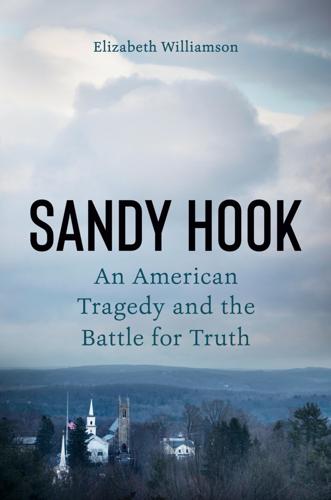
Sandy Hook: An American Tragedy and the Battle for Truth
by
Elizabeth Williamson
Published 8 Mar 2022
“Since the beginning of journalism, there has been bias in the media. From the first journalist carving on stone tablets, media bias and bias of human beings has been a fact of life. But today we face an altogether different threat. The power of big tech is something that William Randolph Hearst at the height of yellow journalism could not have imagined. “Polling shows roughly 70 percent of Americans receive their political news from social media,” he said. “Over and over again I’ve heard from Americans concerned about a consistent pattern of political bias and censorship on the part of big tech.” After several flowery minutes Cruz got around to admitting that he had zero evidence conservatives were being systematically censored.
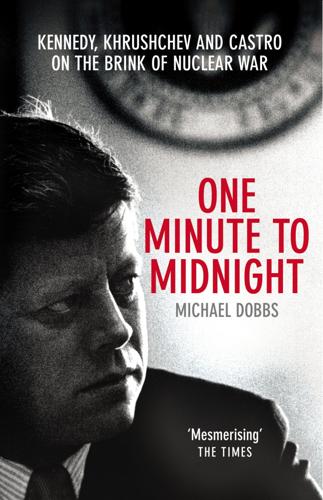
One Minute to Midnight: Kennedy, Khrushchev and Castro on the Brink of Nuclear War
by
Michael Dobbs
Published 3 Sep 2008
"A splendid fight," enthused the publisher, after a visit to the battlefield, with a revolver in his belt and a pencil and notebook in his hand. "A splendid little war," agreed future secretary of state John Hay, in a letter to his friend Theodore Roosevelt. More than six decades later, the American press had shed much of its jingoistic, "yellow journalism" character. But there were still publishers and reporters in the Hearst tradition who enthusiastically campaigned for a showdown, this time with the Soviet Union. The role once played by Hearst was assumed by the Time-Life empire of Henry and Clare Boothe Luce, which accused the Kennedy administration of "doing nothing" to prevent a Communist takeover of Cuba.
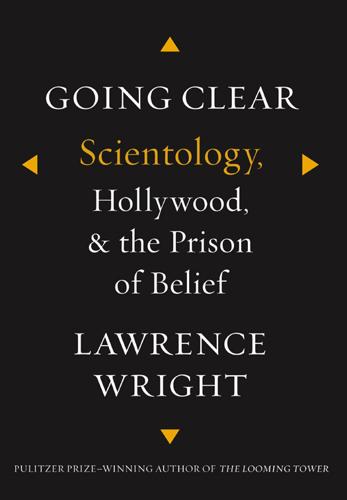
Going Clear: Scientology, Hollywood, and the Prison of Belief
by
Lawrence Wright
Published 17 Jan 2013
The scandals that periodically erupted in the press about Hubbard’s biography, or his disappearance, or the church’s use of private investigators and the courts to harass critics—these things rarely touched the awareness of Scientology luminaries. Many simply didn’t want to hear about the problems inside their organization. It was easy enough to chalk such revelations up to religious persecution or yellow journalism. “There are two sides to the story, but I don’t know both sides,” Travolta blithely said when he was asked about Operation Snow White. “I’m not involved with that.” In any case, for someone like Travolta, who was so publicly associated with the church, it would be hard to just walk away. He had been asked to declare himself publicly, and he had done so, again and again.
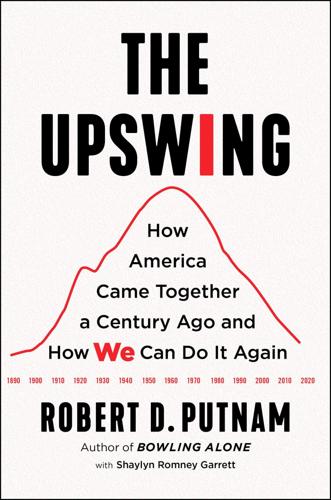
The Upswing: How America Came Together a Century Ago and How We Can Do It Again
by
Robert D. Putnam
Published 12 Oct 2020
In fact, even for the later period of increasing polarization after 1970, evidence in support of many putative causal factors is weak. This is true of the role of individual politicians, or of electoral or legislative institutions, like gerrymandering or campaign finance.102 Change in the mass media (from “yellow journalism” in 1900 to Uncle Walter Cronkite in mid-century to Fox News and Twitter feeds today) is a plausible suspect in this mystery, but research has found no clear answer to which is cause and which effect.103 We shall return to the task of understanding the full 125-year cycle of falling and rising polarization later in this book.
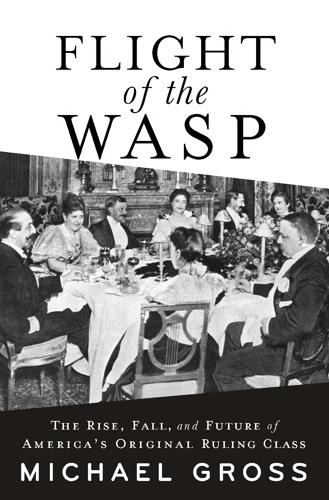
Flight of the WASP
by
Michael Gross
Their great style and the wealth that paid for it camouflaged their unfortunate significance for the larger WASP elite, because even as this subset of a subset marked a downward turn in their cohort’s cultural significance, they attracted ever-increasing attention. An audience for their antics coalesced as men like McAllister marketed them and newspapers from the New York Times to the yellow journalism outlets of Joseph Pulitzer and William Randolph Hearst covered them, creating a new industry best described as organized social voyeurism. Their private schools and clubs fenced them off from the public but perversely made them stand out even more. Louis Keller, a publisher who had run Town Topics, a society magazine that debuted in 1879, went on to found The Social Register, a directory of society first published in 1886.
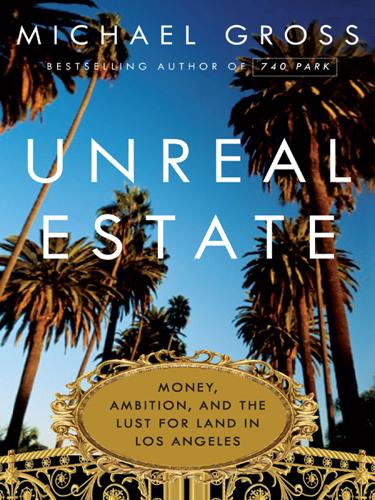
Unreal Estate: Money, Ambition, and the Lust for Land in Los Angeles
by
Michael Gross
Published 1 Nov 2011
But though two witnesses supposedly came forward, none actually appeared before the grand jury, which again exonerated the girl. “Nothing is sacred to Mr. Hearst,” the pro-Bell Beverly Hills Citizen editorialized, “not even a man’s fireside.” Even Chandler’s Times agreed with the Bell forces this one time, calling the attacks on Minnewa “vicious yellow journalism” and “reprehensible tactics,” though warning darkly that approval of the cement plant “would be a severe blow to our good name abroad as well as a serious inroad upon our security at home.” Early in 1930, the city council gave Bell another ray of hope, approving the quarry; a few days later the mayor of Los Angeles ratified the decision.
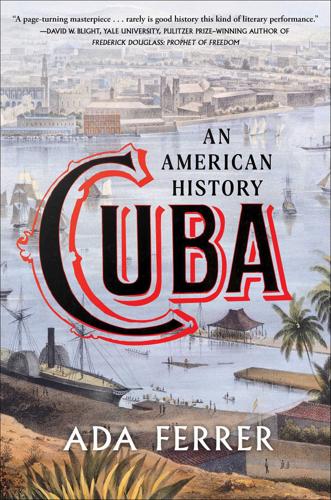
Cuba: An American History
by
Ada Ferrer
Published 6 Sep 2021
A popular poem in Havana described him as having “the look of a reptile, the body of a dwarf, the instinct of a jackal, a soul like mud.” In the United States, newspapers dwelled on the suffering of the reconcentrados, publishing pictures of emaciated children and the mass graves of Cubans who had succumbed. The coverage was almost obsessive and helped launch what came to be called “yellow journalism”—a new wave of sensationalized news with bold, alarmist headlines.18 Whatever the world’s opinions of Weyler, the Spanish government placed in him all its hopes of retaining Cuba. Madrid sent him reinforcements and set aside questions about the morality or efficacy of his policies. Weyler escalated engagements with the enemy and ordered the killing of wounded, captured, or surrendered combatants.
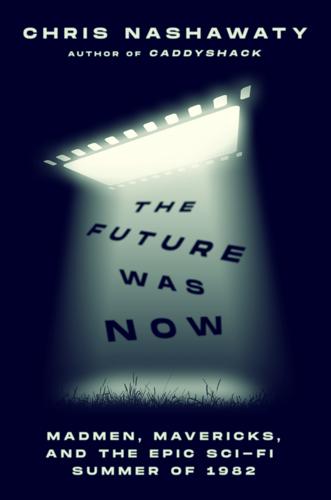
The Future Was Now: Madmen, Mavericks, and the Epic Sci-Fi Summer Of 1982
by
Chris Nashawaty
A week after the article was published, my editors, Matt Miller and Michael Sebastian, informed me that the piece had struck a nerve with their readers. So I began to dig deeper. It was then that the broader subject of this book revealed itself and came into focus. As I looked back through the yellowing New York Times archive of movie reviews from 1982, I discovered—and on some level was just reminded of—something that my teenage self would have been all too aware of back in the summer of 1982: that it was a season loaded with one future sci-fi classic after another, rolled out weekend after glorious weekend.

Cadillac Desert
by
Marc Reisner
Published 1 Jan 1986
After the First World War, aluminum became cheaper, though still not common. The raw material, the production flow, the manufacturing patent, and the end uses were pretty much controlled by the Aluminum Company of America, which was to vertical integration what William Randolph Hearst was to yellow journalism. Hearst, at least, had competition; Alcoa didn’t—except from Adolf Hitler, who made Germany the world leader in aluminum production soon after seizing power, for reasons the Allies did not immediately discern. When the first electricity began to flow out of Bonneville Dam, the Corps of Engineers’ big power and navigation dam three hundred miles downriver, the government tried to induce Alcoa’s potential competitors to build plants in the Northwest by offering them bargain rates, but nobody was particularly interested.
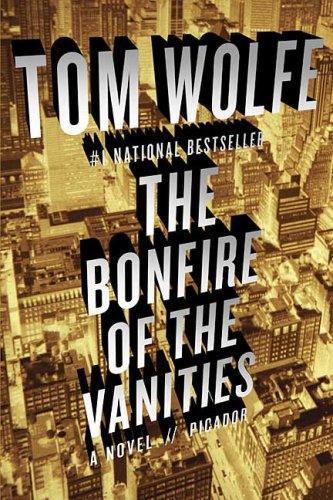
The Bonfire of the Vanities
by
Tom Wolfe
Published 4 Mar 2008
“The Yanks! Dear God, I love them! Tells them a joke. Dear God, dear God…I do like a fellow with sand. Make a note of this, Brian. Give him a rise in pay. Twenty-five dollars a week. But for God’s sake, don’t tell him or anyone else what for. Tells them a joke! Raped by a gorilla!” Steiner’s love of yellow journalism, his awe of the “sand” that gave journalists the courage to try such stunts, was so genuine, Fallow and Highridge couldn’t help but laugh along with him. Steiner’s little face was far from that of a Dead Mouse at this moment. The outrageous zest of this American photographer, Silverstein, lent him life, even radiance.

The Geography of Nowhere: The Rise and Decline of America's Man-Made Landscape
by
James Howard Kunstler
Published 31 May 1993
The village lies nestled along the west ern side of the river valley, which rises steeply to a sort of hilly plateau. The gridded blocks are bisected by service alleys lined by barns and car riage houses. The nineteenth-century houses were cobbled over with 1960s redos, and the materials they used-aluminum and asbestos sid ing, fake brick-have entered a secondary stage of decay. Many blue and yellow New York State historical markers stand scat tered around the town today. Each tells a little piece of the story of the Battle of Saratoga, which took place in woods and farm fields nearby in 1777. "Here the British Army parked their artillery," says one marker near the driveway of the High School.

Heaven Is a Place on Earth: Searching for an American Utopia
by
Adrian Shirk
Published 15 Mar 2022
Finally, out on the little county thoroughfare named Phalanx Road, as we are heading toward the parkway, we spot it nearly engulfed in the trees and with no pull-out, no way to safely sidle up and squint and say, “Honey, what is a ‘phalanx’?” Lost in the grass is one of those little standard-issue blue-and-yellow New York State historical markers: North American Phalanx. Site of the 1844 cooperative agricultural community; founded by Albert Brisbane and modeled after the philosophy of French Socialist Charles Fourier. This communal experiment was a success until it was destroyed by a fire in 1854. Behind the sign the land dips toward a thin brook that feeds this tiny, scrubby strip of woods—itself somehow undisturbed by the particleboard planned community it buffers from the sound of the road.

A Manual for Writers of Research Papers, Theses, and Dissertations, Eighth Edition: Chicago Style for Students and Researchers
by
Kate L. Turabian
Published 14 Apr 2007
Some think freedom always comes with democracy; however, many voters in many countries have voted for governments that they know will restrict their rights. When items in a series have internal punctuation, separate them with semicolons (see also 21.2.2). Green indicates vegetation that remained stable; red, vegetation that disappeared; yellow, new vegetation. 21.4 Colon A colon introduces a clause, phrase, or series of elements that expands, clarifies, or exemplifies the meaning of what precedes it. Between independent clauses, it functions much like a semicolon, though more strongly emphasizing balance or consequence. People expect three things of government: peace, prosperity, and respect for civil rights.
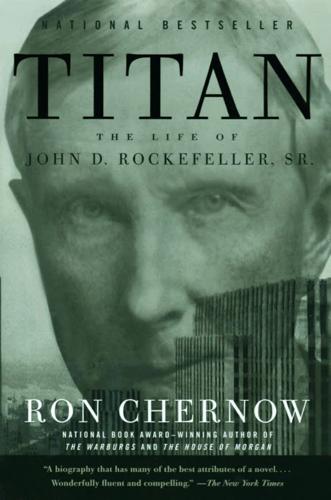
Titan: The Life of John D. Rockefeller, Sr.
by
Ron Chernow
Published 1 Jan 1997
Paralleling this was the rise of mass-circulation newspapers, which catered to an expanding reading public. Competing in fierce circulation wars, Joseph Pulitzer, William Randolph Hearst, and other press barons plied readers with scandals and crusades. Nonetheless, the turn of the century marked more than the heyday of strident tabloids and yellow journalism, as sophisticated publications began to tackle complex stories, illustrating them lavishly and promoting them aggressively. For the first time in history, college graduates went to work on newspapers and magazines, bringing a new literary flair to a world once considered beneath the dignity of the educated elite.

Betrayal of Trust: The Collapse of Global Public Health
by
Laurie Garrett
Published 15 Feb 2000
Shankaranand and his predecessor in the Ministry of Health supported an unusual medical paradigm: daily consumption of one’s own urine as treatment for cancer or AIDS.20 So from the first moments of Surat’s epidemic the Indian public was deluged with at least as much misinformation as actual facts. And while it was tempting to blame the media for its lack of accuracy and for yellow journalism, India’s health care establishment had to share credit. The information schism—between truth and fantasy, accuracy and exaggeration—would prove disastrous for India in coming days.21 But in Surat itself there were few citizens left who could be misinformed, and nearly the entire medical profession, save the dedicated nurses and physicians of Civil Hospital, had flown the coop.

The Impact of Early Life Trauma on Health and Disease
by
Lanius, Ruth A.; Vermetten, Eric; Pain, Clare
Published 11 Jan 2011
Dramatically, she unrolled a computerized list of rare causes of hyperglycemia that church members had found on the Internet. She argued that the doctors were malfeasÂ� ant for neglecting to test for these problems. How€– she turned to the judge – how could they take away her little girl whom she had raised from infancy? She unfolded the yellowed news article with her photo as she reminded the judge that the City of San Francisco had named her foster mother of the month just 10 years ago. She hinted at a suit for malpractice. Tanetia was called up. She said that she loved her Grams. She said that she knew that Grams needed the money. Tanetia almost whispered, “I don’t want to live elsewhere.”
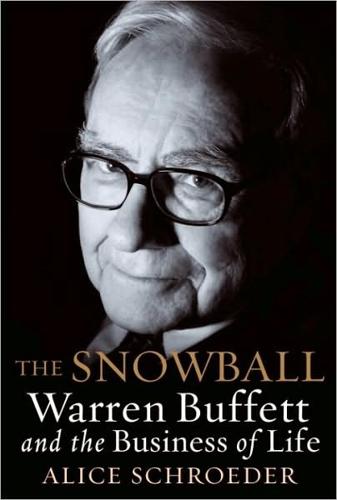
The Snowball: Warren Buffett and the Business of Life
by
Alice Schroeder
Published 1 Sep 2008
The story was picked up by Time, Newsweek, Editor & Publisher, and the LA Times, among others.41 An informal survey of twenty-six boys’ homes showed that immediately after the exposé, more than a third of them said that their fund-raising efforts were affected.42 But Monsignor Francis Schmitt, an understudy of Wegner’s who had begun assuming some of his duties, quickly circulated a letter to Boys Town supporters calling the Sun “a kind of Shopper’s Guide.” It said, “There can only have been yellow journalism, prejudice, jealousy, and, for all I know, bigotry involved in the story,” suggesting that the motive was anti-Catholic bias. In fact, the reporters had bent over backward to avoid such a bias. Moreover, Schmitt said, the story was full of “snide innuendos” that cut into his vitals all “because of a cheap editor of a cheap paper, whose owner is himself a millionaire many times over.”43 Wegner also remained unrepentant.

George Marshall: Defender of the Republic
by
David L. Roll
Published 8 Jul 2019
Dean Acheson’s characterization of Hurley was apt: “Trouble moved with him like a cloud of flies around a steer.”8 Though there is no supporting record, Truman claimed in his memoir that he met with Hurley in the White House at 11:30 a.m. the next day about the “seriousness of the situation” in China and that Hurley assured him that he would “wind up a few personal matters and then return to China.”9 Later, during his weekly cabinet luncheon, an aide handed the president a scrap of yellow news copy that had been torn off the White House ticker tape machine. According to Secretary of Commerce Henry Wallace, Truman glanced at the news flash, held it up, and angrily said, “See what a son-of-a-bitch did to me?”10 Without informing the president, Hurley had released to the press a scathing letter of resignation, dated the day before, claiming that “career men” in the State Department continuously undermined his efforts to support the Nationalist government of Chiang Kai-shek by siding with “the Chinese Communist armed party” and “the imperialist bloc of nations” whose policy it was to keep China divided against herself.
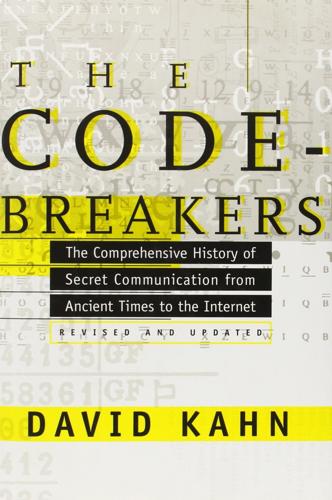
The Codebreakers: The Comprehensive History of Secret Communication From Ancient Times to the Internet
by
David Kahn
Published 1 Feb 1963
Even two of the better examples, sent by the Germans during World War I, have that “funny” sound that invariably accompanies them. The first, disguised as a press cable, read: PRESIDENT’S EMBARGO RULING SHOULD HAVE IMMEDIATE NOTICE, GRAVE SITUATION AFFECTING INTERNATIONAL LAW. STATEMENT FORESHADOWS RUIN OF MANY NEUTRALS. YELLOW JOURNALS UNIFYING NATIONAL EXCITEMENT IMMENSELY. The initial letters spell out Pershing sails from N. Y. June 1. The second message, apparently sent as a check on the first, beaded the same content on the second letters of each word: APPARENTLY NEUTRAL’S PROTEST IS THOROUGHLY DISCOUNTED AND IGNORED.
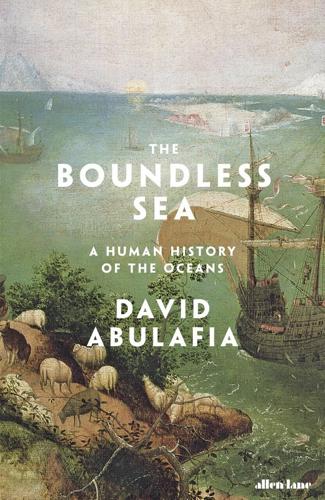
The Boundless Sea: A Human History of the Oceans
by
David Abulafia
Published 2 Oct 2019
There, bread became ‘the staff of life’ for Arabians, Persians and north Indians. The western sector was the sector of bread. But the eastern sector, from southern India across to the paddy fields of south-east Asia, was wedded to rice in a great variety of types: husky and round, thin and polished, even (once one reached China) white, brown, pink and yellow, new and old – this was considered the tastiest type.5 Grain surpluses, in wheat or rice, underwrote the political success of the states that emerged close to the ancient and medieval Indian Ocean – whether Sumer in Iraq, far back in the third and second millennia BC , or Angkor in Cambodia in the ninth to twelfth centuries AD .